Shocking images show scale of devastation in Nepal after 5.6 magnitude destroyed buildings and buried entire families – as death toll rises to 157
At least 157 people have been killed after an overnight earthquake struck a remote part of Nepal.
The magnitude 5.6 quake destroyed buildings and flattened mud houses in communities in the Himalayan country’s isolated northwestern districts late on Friday, November 4.
Locals frantically dug through the rubble in the dark to pull survivors from the rubble of their collapsed homes, as security forces rushed to help with rescue efforts.
Officials said another 199 were injured in the earthquake, which was felt as far away as the Indian capital New Delhi, almost 500 kilometers (310 miles) from the epicenter in Jajarkot.
The death toll was expected to rise as communications remained down in many places as thousands of local residents were now left homeless as a result of the destruction.
The magnitude 5.6 quake destroyed buildings and flattened mud houses in communities in Nepal’s isolated northwestern districts
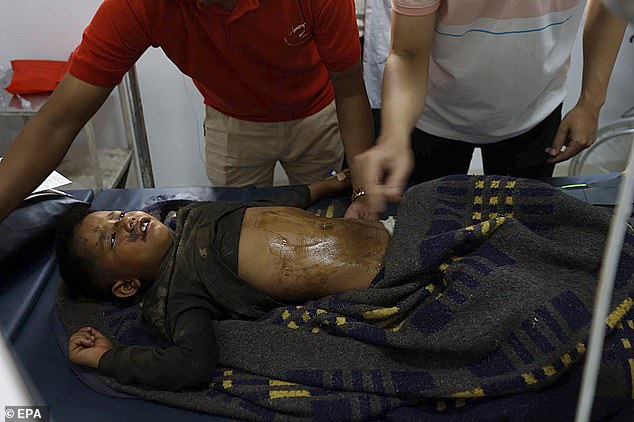
Officials said another 199 people were injured in the earthquake, which was felt as far away as the Indian capital New Delhi.
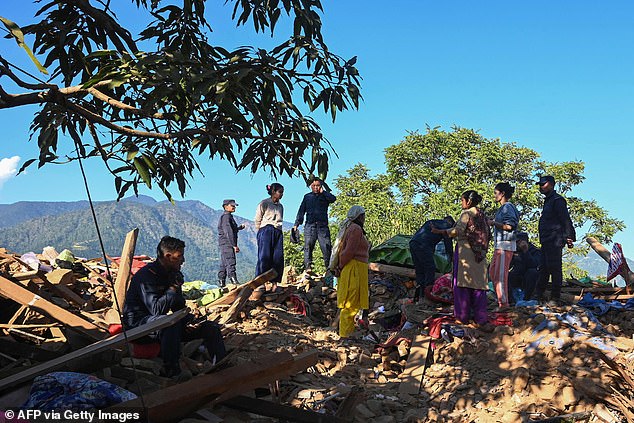
Locals frantically dug through the rubble in the dark to pull survivors from the rubble of their collapsed homes
Gopal Chandra Bhattarai, spokesperson for Karnali police, said, “The remoteness of the districts makes it difficult to penetrate information.
“Some roads were blocked due to damage, but we are trying to reach the area via alternative routes.”
Local media sites reported that most of the dead were crushed by the rubble, after houses – mostly made by stacking rocks and logs – crumbled under the force of the midnight earthquake.
At least 105 people were killed in Jajarkot district, a largely agricultural area, while 52 people were killed in neighboring Rukum district, officials said.
Dozens of survivors with fractures and head injuries were taken for treatment to a hospital in Nepalgunj, a small town near the Indian border.
Kamala Oli, a woman cradling her baby at a hospital treating survivors, said: “It came while we were sleeping. There were three of us in the house. Only two of us lived.”
Another injured man recovering in hospital also described being buried while he slept.
Tika Ram Rana, who had his head wrapped in a white bandage, said: “I was sleeping at night and around 10 or 11 o’clock at night it started shaking and the house collapsed.
“So many houses have collapsed and so many people have been buried.”
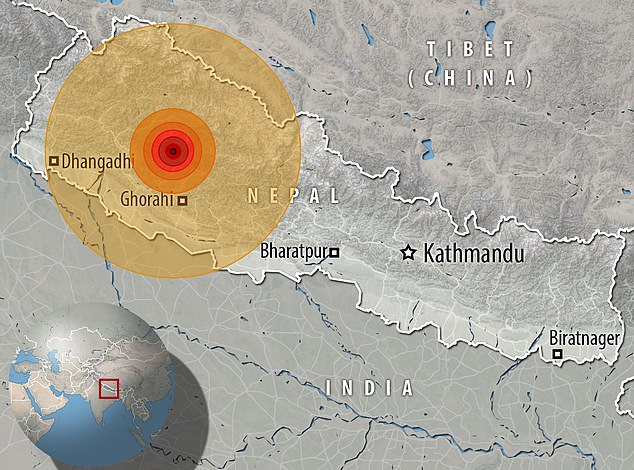
The earthquake was felt as far away as the Indian capital New Delhi, almost 500 kilometers from the epicenter.

Local media sites reported that most of the dead were crushed by rubble as their homes collapsed under the force of the earthquake at midnight.
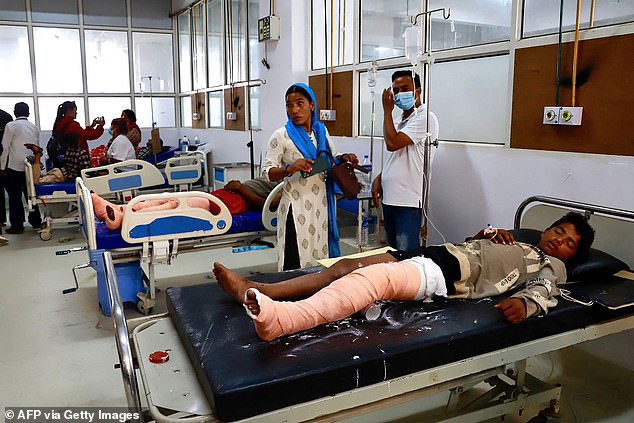
Dozens of survivors with fractures and head injuries were taken to a hospital in Nepalgunj for treatment
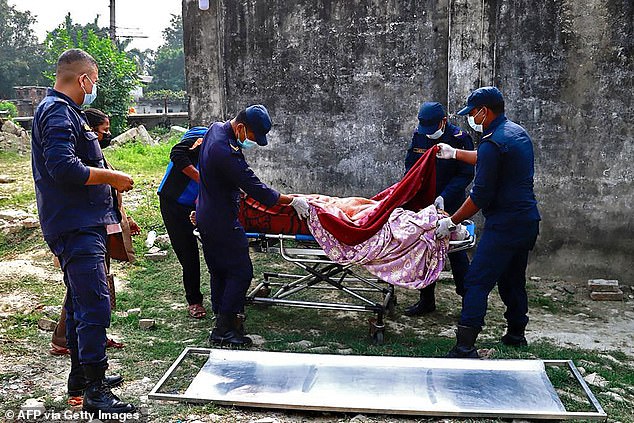
Security forces were deployed on foot and in helicopters to assist in search and rescue operations
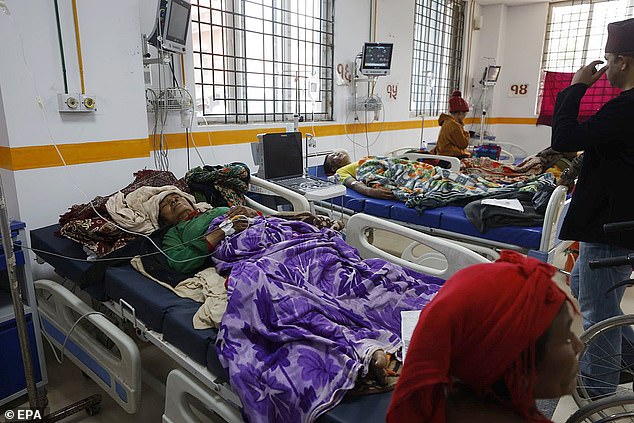
More than 100 beds became available in the regional hospital in the city
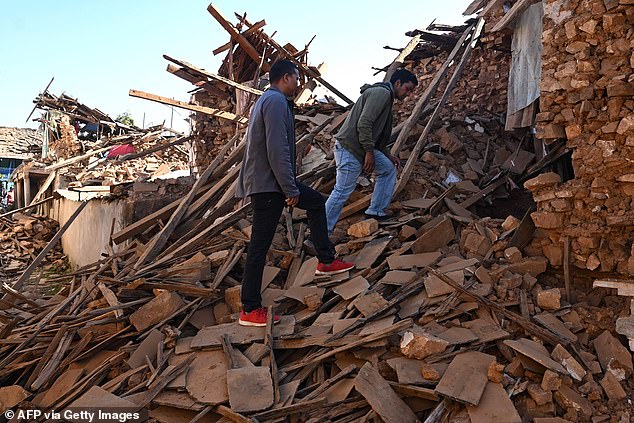
Rescue efforts were hampered because many of the mountain villages were only accessible on foot

Local television broadcast images of troops recovering bodies while others helped dig out and carry the wounded
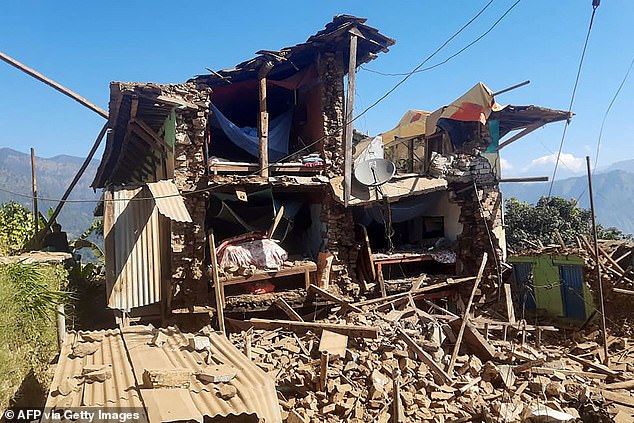
At least 105 people were killed in Jajarkot district, a mainly agricultural area, while 52 people were killed in neighboring Rukum district.
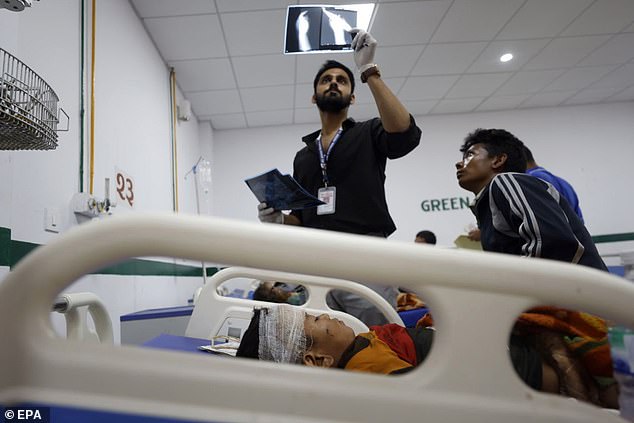
Teams of doctors were ready to help the injured at the city hospital
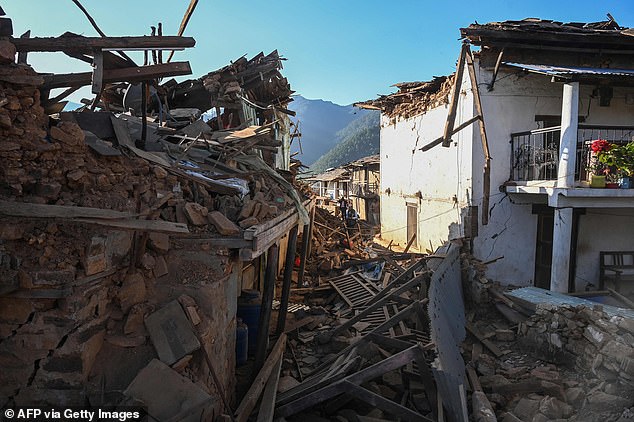
Soldiers could be seen trying to clear the roads blocked by landslides caused by the earthquake
Security forces were deployed on foot and in helicopters to assist in search and rescue operations.
Local television broadcast images of troops recovering bodies while others helped dig out and carry the wounded.
Tents, food and medicine were flown in overnight as rescuers tried to quickly get help to those in need.
However, these actions were hampered by the fact that many of the mountain villages were only accessible on foot.
Soldiers could be seen trying to clear the roads blocked by landslides caused by the earthquake.
Apart from rescue helicopters, small government and army aircraft were the only other vehicles that could land in the short mountain strips and ferry the injured to hospital in Nepalgunj.
In this regional hospital in the city, more than 100 beds were available and teams of doctors were ready to help the injured.
Bimal Kumar Karki, one of the first people taken to the regional hospital, said: “I was sleeping soundly when suddenly it started shaking violently. I tried to run away, but the whole house collapsed.
‘I tried to escape, but half of my body was buried under the rubble.
‘I shouted, but all my neighbors were in the same situation and shouted for help. It took almost half an hour to an hour for the rescuers to find me.”
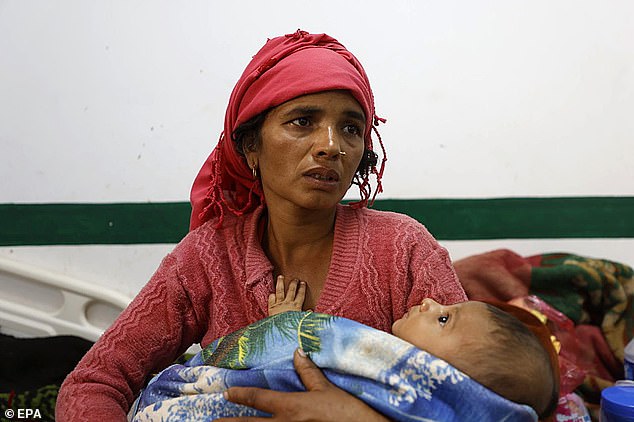
Nepal lies on a major geological fault line where the Indian tectonic plate penetrates the Eurasian plate to form the Himalayas, and earthquakes are common.
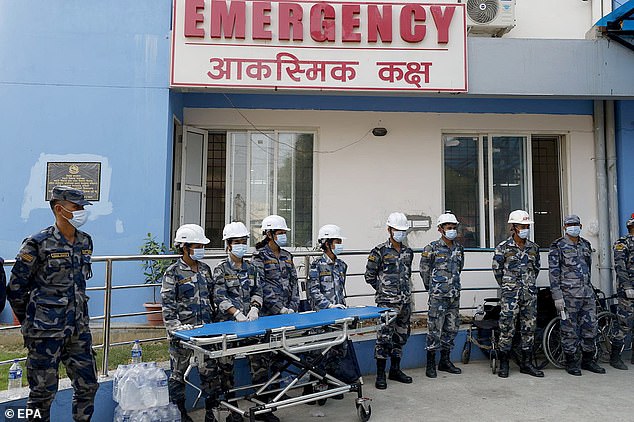
In addition to rescue helicopters, small government and army aircraft were also able to land in the short mountain strips and transport the injured to the hospital in Nepalgunj.

At least 157 people have been killed after an overnight earthquake struck a remote part of Nepal

Interior Ministry spokesperson Narayan Prasad Bhattarai said the death toll is unlikely to rise significantly
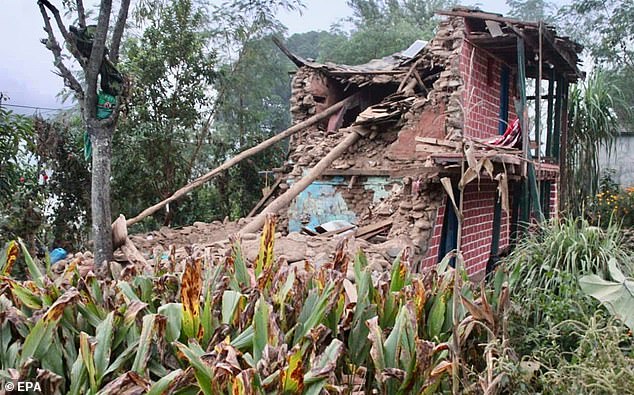
Friday’s earthquake was followed several hours later by an aftershock in the same area with a magnitude of 4.0
Nepalese Prime Minister Pushpa Kamal Dahal arrived at the site of the earthquake on Saturday after expressing his “deep sorrow over the human and physical damage”.
“The government is serious about providing relief to the victims and treating the injured,” he said.
Indian Prime Minister Narendra Modi said he was “deeply saddened” by the loss of life.
“India stands in solidarity with the people of Nepal and is ready to provide all possible assistance,” he added.
Nepal lies on a major geological fault line, where the Indian tectonic plate penetrates the Eurasian plate to form the Himalayas, and earthquakes are common.
A magnitude 7.8 earthquake in 2015 killed nearly 9,000 people and damaged about 1 million buildings, including 8,000 schools.
In November last year, six people were also killed when a magnitude 5.6 earthquake struck Doti district, near Jajarkot.
Friday’s earthquake was followed several hours later by an aftershock in the same area with a magnitude of 4.0, the US Geological Survey said.
